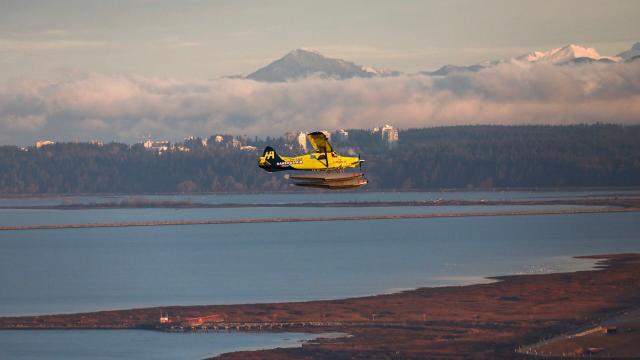Air travel is a massive source of carbon emissions, making up 2.5% of all emissions on earth. That’s not nearly as much as automobiles or power production, but it is hardly an insignificant source. If we’re working on reducing emissions from the other two, we should also be working to find solutions for the third. Thanks to Harbour Air Seaplanes in Canada and MagniX electric motors out of Australia, the first major hurdle on the path toward electrified air travel has been cleared.
On Tuesday, the first fully-electric commercial flight took off. Granted, it was a small 6-passenger sea plane, but I’m still mighty impressed. You have to learn how to walk before you can run, and this looks like an incredibly promising baby step.
The DHC-2 de Havilland Beaver plane was fitted with a 750-horsepower electric motor built by MagniX. With a big rack of lithium batteries aboard the plane has an in-flight range of about 160 kilometre.
“The [flight] range now is not where we’d love it to be, but it’s enough to start the revolution,” MagniX chief executive Roei Ganzarski told AFP.
Getting big commercial jets to run on full EV power seems a bit far fetched with current battery technology, but even this is a start. Getting these little prop planes away from a reliance on fuel, is the first rung of the ladder. And to their credit, Harbour Air has committed to a fully electric fleet of float planes by 2022.
As first efforts go, this seems a hell of a lot more successful than Wilbur and Orville’s first flight.
I could see this kind of plane taking off (literally) in this exact form factor as replacement for the short-bop bush planes of Australia and harbour planes in Canada and the Pacific Northwest. For regular short flights to remote locations, this electric propulsion plane could reduce a small flight company’s recurring fuel and repair bills.
Maybe, in the not-so-distant future we could see the single prop Pipers and private jets adopt this kind of technology. Or maybe the next step for a plane like that is a hybrid. Surely it takes far more energy to get a plane airborne than it does to keep it aloft. Kick on the jet engine for take off, then switch to EV power once you reach cruising altitude. I’m not an engineer, but this makes all kinds of sense to me.
How much better would a puddle jumper plane be if you didn’t have to hear the engines for a couple hours?
I’m chalking this one up as a major win for electric propulsion and aviation. I hope to ride in an electric plane in my lifetime. Sounds like a great time, and I hate planes.
H/T Bret and Nosrat Whipple
